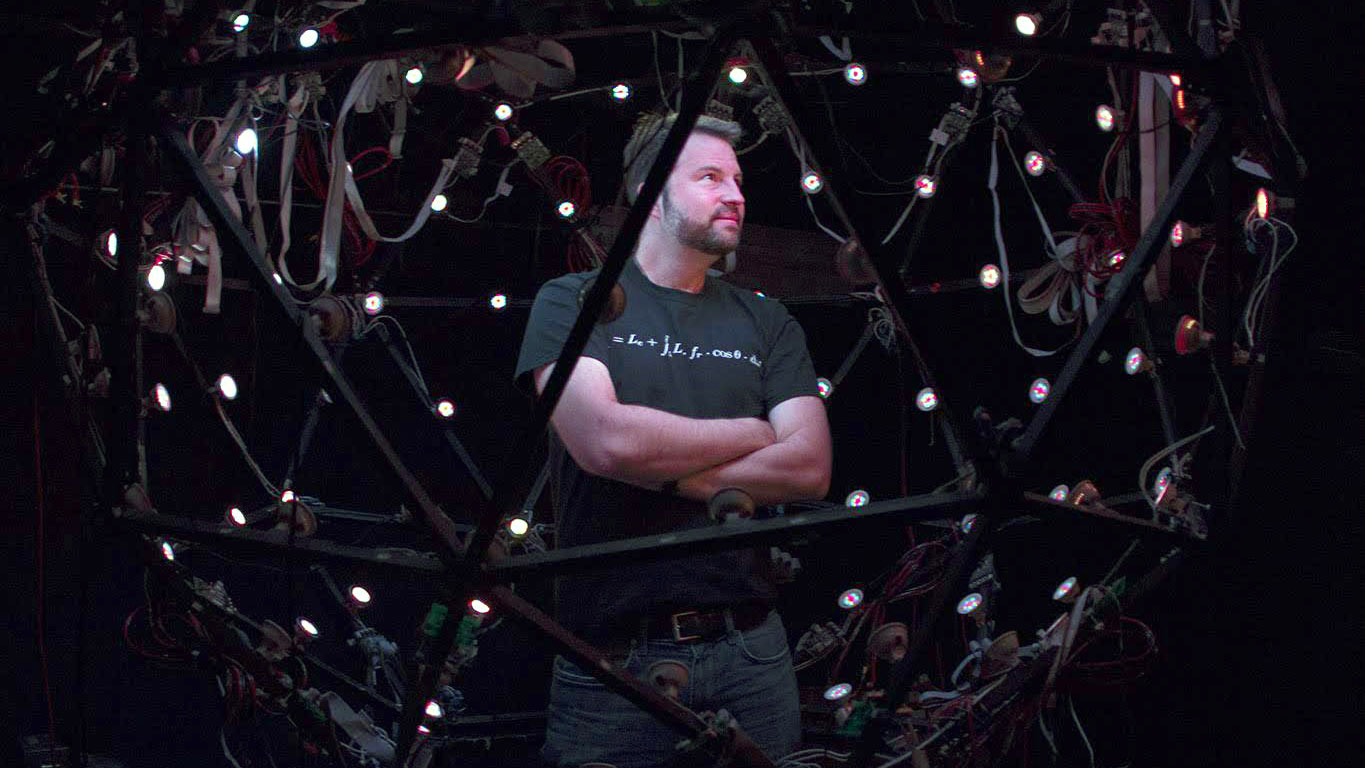 Paul Debevec stands surrounded by his Light Stage technology.
Paul Debevec stands surrounded by his Light Stage technology. Lighting up Hollywood
The Television Academy has announced that UC Berkeley alum Paul E. Debevec (Ph.D.’96 CS) will receive the Charles F. Jenkins Lifetime Achievement Award at its 74th Engineering, Science & Technology Emmy Awards in September. The honor is given to a living individual whose ongoing contributions have significantly affected the state of television technology and engineering.
The award recognizes Debevec’s groundbreaking work in high-dynamic-range imaging, image-based lighting and photogrammetry — techniques used in computer graphics for visual effects and virtual production. His pioneering work enables engineers to record and reproduce the light of real scenes to illuminate virtual scenes, a technology that is ubiquitous on today’s cellphone cameras.
Debevec — now the director of research, creative algorithms and technology for Netflix — said that his work has been informed by his time as a graduate student and postdoctoral researcher at UC Berkeley in the late 1990s. For his Ph.D. thesis, he presented an approach for modeling and rendering existing architectural scenes from sets of still photographs. This system was used to make “The Campanile Movie,” a short film that appears to record the Berkeley campus landmark from an airborne drone, long before commercial drones were available. The film inspired and contributed to the virtual background technology later used in the renowned “bullet-time” shots in “The Matrix.”
“Paul did an outstanding Ph.D. thesis with me,” said his adviser, Jitendra Malik, professor of electrical engineering and computer sciences. “The Facade system pioneered image-based modeling and rendering, and techniques developed as part of that work made their way into many practical systems for visual effects in Hollywood.”
High-dynamic-range imaging, the subject of Debevec and Malik’s 1997 paper, is considered a linchpin of computer graphics and — combined with techniques stemming from Debevec’s 1998 paper on image-based lighting — has enabled realistic integration of existing live-action lighting in computer-generated imagery. These tools and concepts are now standard within the visual effects industry, used whenever a digital character needs to be rendered realistically in the appropriate lighting for the environment.
The concepts and the innovative use of LED lighting that Debevec pioneered with a technique called the Light Stage have further laid the groundwork for the use of LED lighting in virtual production, which has rapidly increased as a tool for lighting actors on virtual stages. Using lighting simulation software, the Light Stage process allows a computer-generated image or live actor in the studio to be illuminated by the light of the scene in which it’s supposed to occur. Debevec’s virtual production technique surrounds actors with LED lighting that displays images of the virtual sets they will appear in, lighting the actors correctly to look as if they are really there.
This technique helped create the digital characters in such movies as “Spider-Man 2,” “Superman Returns” and “The Curious Case of Benjamin Button,” all of which were nominated for or won Academy Awards for Best Achievement in Visual Effects; this work also won Debevec a 2010 Scientific and Engineering Academy Award. Further evolutions of the Light Stage technology were used in films such as “Avatar,” “Maleficent,” “Furious 7,” “Blade Runner 2049” and “Free Guy,” earning Debevec’s team a second Scientific and Technical Oscar in 2019.
“My time at Berkeley has been hugely influential on my professional achievements,” Debevec said. “Professor Jitendra Malik’s computer-vision research group taught me how to approach computer graphics problems from a computer vision standpoint, as we were able to find ways to analyze images to create the 3D models from which we could create computer graphics renderings. I’m incredibly fortunate to have had UC Berkeley’s amazing faculty, students, environment and traditions of excellence to influence my work.”
See related:
